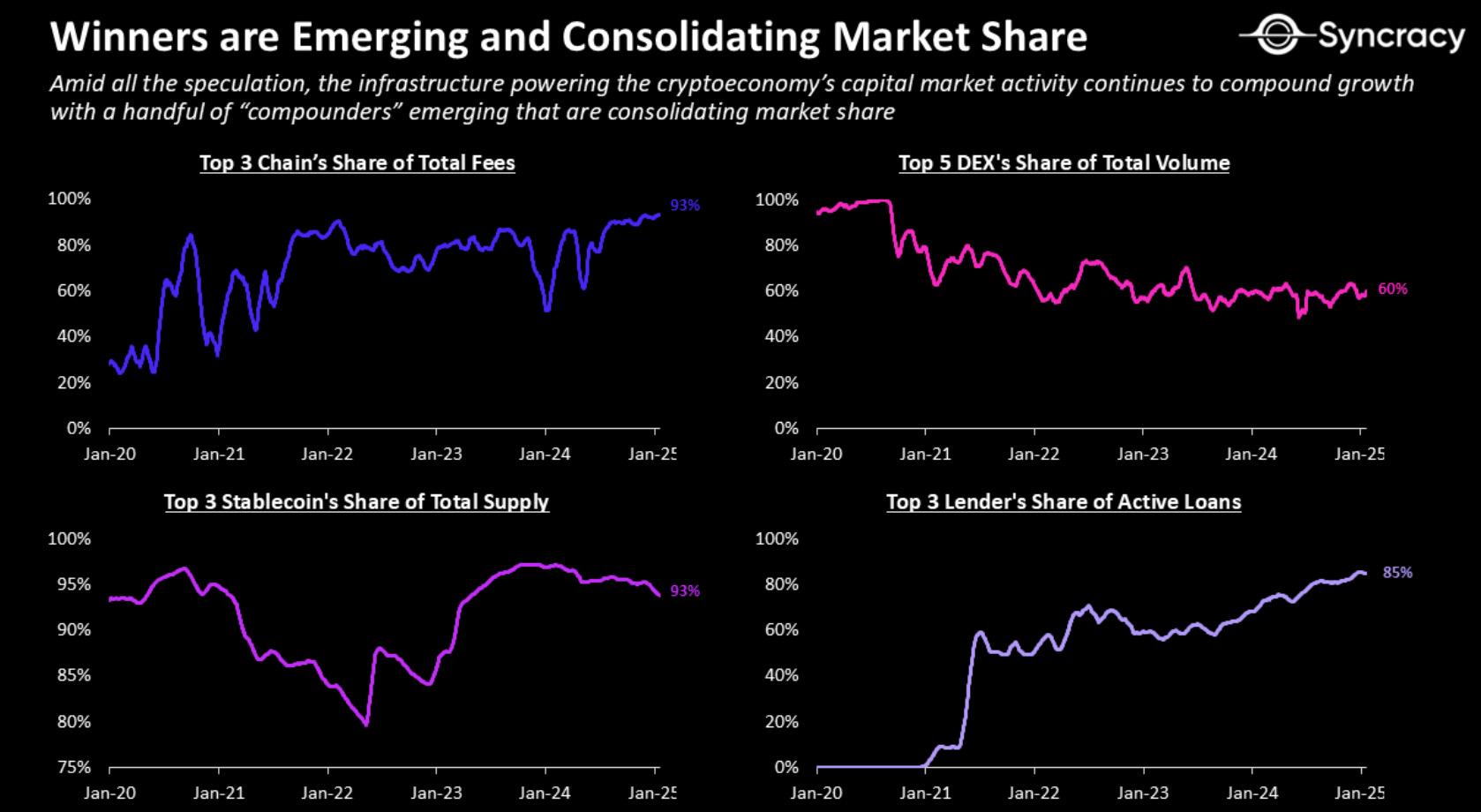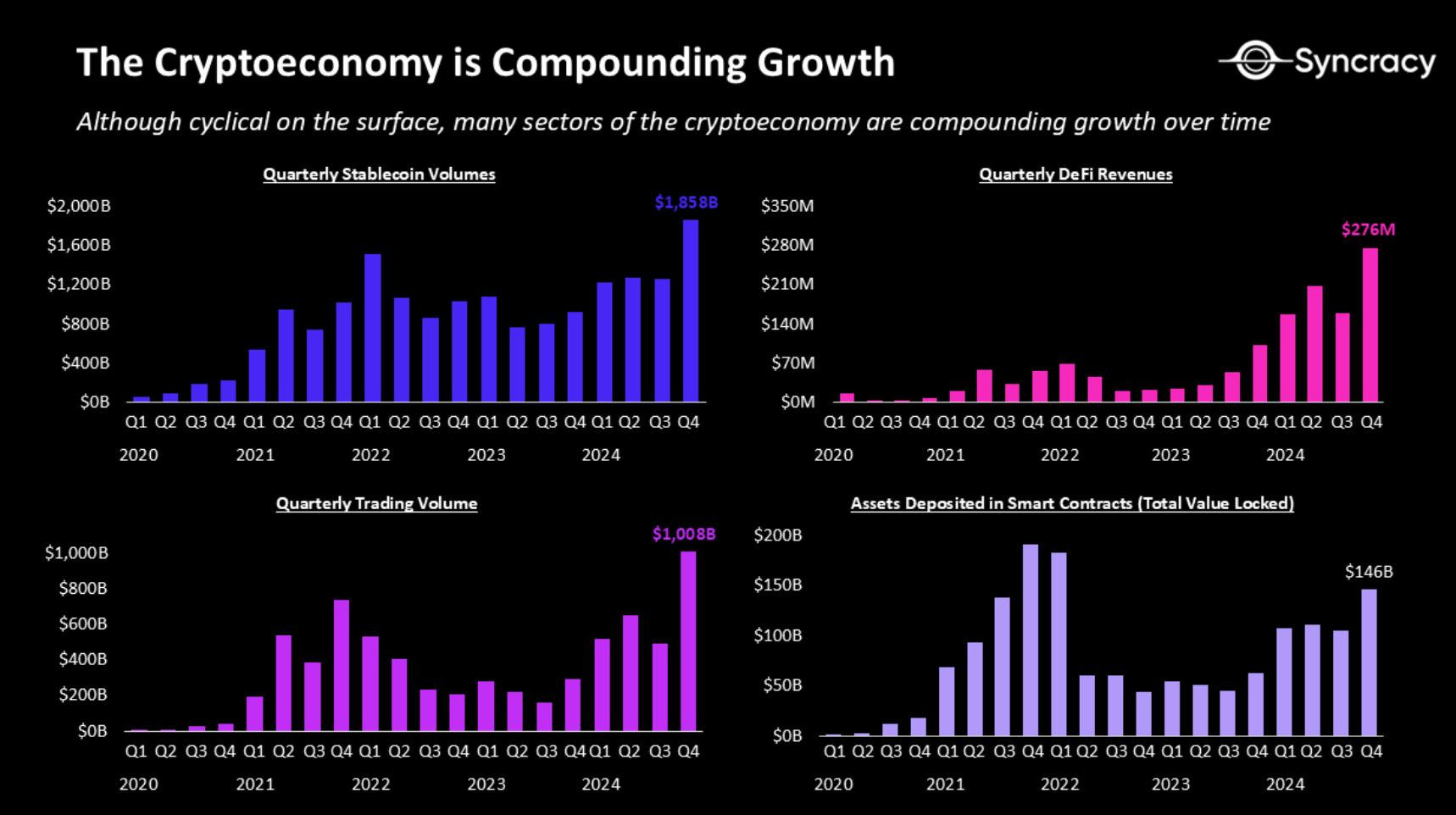Here is the English translation of the text, with the specified terms translated as instructed:
The critics often cite the prevalent financial nihilism in the crypto economy as evidence that the system will ultimately collapse under the weight of its own excessive development. However, beneath the speculative activities that fuel this skepticism, we also see the emergence of some new "winners" that are steadily growing over time. In this article, we will explore the contradiction between the "uselessness" and "utility" of the crypto economy, and clarify that they are actually two sides of the same coin.
"It was the best of times, it was the worst of times; it was the age of wisdom, it was the age of foolishness; it was the epoch of belief, it was the epoch of incredulity; it was the season of Light, it was the season of Darkness; it was the spring of hope, it was the winter of despair; we had everything before us, we had nothing before us." - A Tale of Two Cities, Charles Dickens
The critics often use the prevalent in the crypto economy as evidence of its futility. Although Bitcoin has been around for 16 years and Ethereum for 9 years, there are still few mainstream use cases that can prove their undeniable utility.
Whenever we hear stories of emerging market users protecting their savings from domestic inflation through stablecoins, there always seem to be more users in developed markets gambling their savings on various Memecoins.
Stablecoins are liberation, and they are also destruction; Blockchain is a great equalizer, and it is also a giant destroyer; The crypto economy is the future of the global financial system, and it is also the greatest collective delusion in human history.
These opposing views reveal the high-risk nature of this technology, which has the potential to change the world, but also the potential to self-destruct due to its excessive radicalism. For many, this contradiction has led to skepticism, making them wonder "what does all this really mean?", and also making them question whether it still makes sense to have a long-term fundamental view on other assets in the crypto economy besides Bitcoin.
However, the contradiction between "uselessness" and "utility" is not a flaw, but a feature, as it reflects the growing pains of the revolutionary potential of the blockchain revolution.
Democratization of Wealth in the Digital Age
In a world where inter-country inequality is increasingly exacerbated, blockchain technology has the potential to bring about the democratization of wealth for billions of people. To understand this, we first need to understand the concept of "blockchain as a new institution" that allows users to transact and contractual relationships without intermediaries. Blockchain achieves this through a supranational property rights system secured by cryptography and open to anyone for verification. This is a subtle but powerful tool for creating a fair competitive economic environment.
Blockchain relies on cloud-based operation, with the only physical presence being thousands of computers distributed around the world, whose collective maintenance of the network's integrity is the key. These computers collectively create an infrastructure for the market, which is the best mechanism to date for achieving the "perfect information" required for effective resource allocation.
Ronald Coase's groundbreaking 1937 paper "The Nature of the Firm" best illustrates the significance of this . Coase argued that firms exist because the costs of finding information, negotiating agreements, and enforcing contracts in the market exceed the efficiency of outsourcing.
Blockchain fundamentally alters this landscape. By automating execution through cryptography, blockchain can make information universally accessible and reduce reliance on intermediaries, significantly lowering transaction costs, especially when combined with internet-era auxiliary technologies like search engines and "gig economy" platforms. As transaction costs decrease, the demand for large hierarchical companies also diminishes, paving the way for a blockchain-based global market structure that can maximize economic production, improve market efficiency, and lay the foundation for entirely new markets.
The crypto economy has already demonstrated these advantages. Stablecoins have promoted economic growth and financial inclusion by providing cheap, currency for global users; global exchanges and lending platforms have created more efficient markets and democratized access to capital markets; has created entirely new markets, allowing users to coordinate different physical and digital resources and monetize them. All of these use cases have extremely high operating efficiency, with profit margins similar to software, while blockchain automatically handles most of the backend infrastructure and settlement activities. Large financial institutions and corporations are slowly recognizing this potential, with many either directly launching on the blockchain or blockchain-based projects as the backend infrastructure for their existing products.
So why do some still remain skeptical about the crypto economy?
The Overlap of Utility and Uselessness
Creating a decentralized infrastructure for transactions and contract execution inevitably leads to unconstrained experimentation. Given the potential user base of billions of internet users globally, the momentum of this experimentation is exceptionally strong. Even world leaders are their own currencies. The allure of opportunity has led to the rapid proliferation of new assets and financial protocols, some of which are truly transformative innovations, and others are outright scams.
While these attempts may seem reckless, they are not much different from the situation during the . Back then, many companies went public with little more than a domain name. In comparison, the crypto economy has amplified this dynamic to the extreme, providing an internet-scale capital market for anyone. This has provided an unprecedented stage for both innovation and speculation, ultimately accelerating the pace of discovery and adoption. After all, speculation will attract new users and provide the much-needed stress testing for the system before the trillions of dollars in future value enter the blockchain space.

The "winners" are emerging and consolidating market share; Data source: DeFiLlama, Artemis, Token Terminal
However, amidst all the speculation, a few "winners" have begun to emerge. Many projects are driving the speculative activities in the capital markets, occupying the headlines and achieving compounding growth behind the scenes. These "winners" are rare "compounders" that are consolidating market share, expanding their capabilities, and increasingly serving non-speculative use cases over time. These projects will ultimately provide the pillars for the crypto economy to mature and scale globally.
Will the Parallel Paths Intersect?
In the foreseeable future, Syncracy believes the best way to articulate the fundamental case for the crypto economy is to find assets that are both robust and able to capture the inherent speculative momentum of the internet capital markets. This is not a profound statement, as in practice, it simply means embracing the fast-growing projects that people are actually using. For now, this also means going long on transaction volume, either by directly monetizing the on-chain speculative activity through asset issuers or market platforms (like exchanges), or by investing in the underlying infrastructure, such as L1s. These L1s not only monetize the speculative activity, but also provide a flexible valuation framework, as they are typically priced as quasi-monetary assets.
In fact, engaging in speculative activities through infrastructure (rapidly growing projects that people actually use) has been a common thread among many of the biggest winners in this cycle. Solana provides world-class performance, making on-chain transactions feel like traditional retail platforms (like Robinhood); Phantom created a user-friendly experience similar to Apple, with a focus on mobile apps, allowing users to speculate in ways never before possible; Pump.fun compressed the cost, effort, and resources required to launch new tokens; Hyperliquid gave on-chain traders the feel of a centralized exchange, but with lower costs and fewer barriers and restrictions; Virtuals and ai16z (Eliza) allow anyone to launch AI agents with associated tokens and wallets; Telegram bots and token discovery tools (like Photon and DexScreener) have brought a glimmer of hope to the on-chain economy, making it easy to access from familiar applications. The examples are endless.

The crypto economy is compounding; data source: DeFiLlama, Artemis
Ultimately, we will move beyond this model of relying on speculative projects to attract extremely high attention and traffic, especially as more institutional investors enter this asset class. At the same time, there are many non-speculative but promising projects in DeFi and DePIN that are steadily climbing the "slope of enlightenment" (the fourth stage of the Gartner Hype Cycle: the technology's benefits start to become more widely understood). These projects have shown early signs of product-market fit and fundamental improvements. While these assets may take time to realize valuation growth, they also urgently need a clear regulatory framework to drive their mainstream adoption. Although some verticals (like stablecoins) have paved the way for the industry and confidently entered the deployment phase of their lifecycle, given the current complexity of crypto economic activity, observers can still find many counterexamples to interpret according to their own biases.
Nevertheless, from an investment perspective, our current goal is to cultivate long-term participants and leverage the dual-edged nature of the crypto economy, increasingly serving real, non-speculative use cases while harnessing the speculative energy to drive financial transformation. These assets can compound returns over time, rather than getting caught in the "churn game" like many other more narrative-driven assets in the crypto economy. These assets will ultimately lead the world's transition to on-chain, as the speculative activities they drive will attract new users and provide much-needed stress testing before trillions of dollars' worth of activity enters the blockchain space in the coming years.
Indeed, uselessness and utility, like the two sides of a coin.







